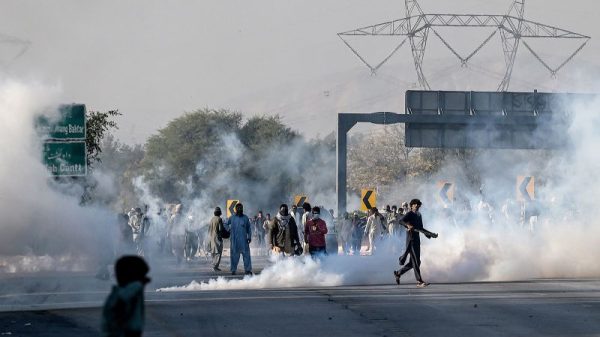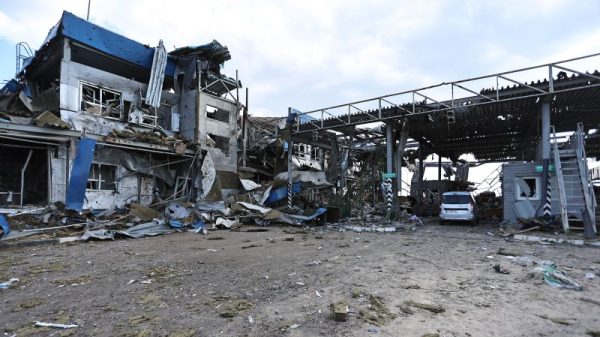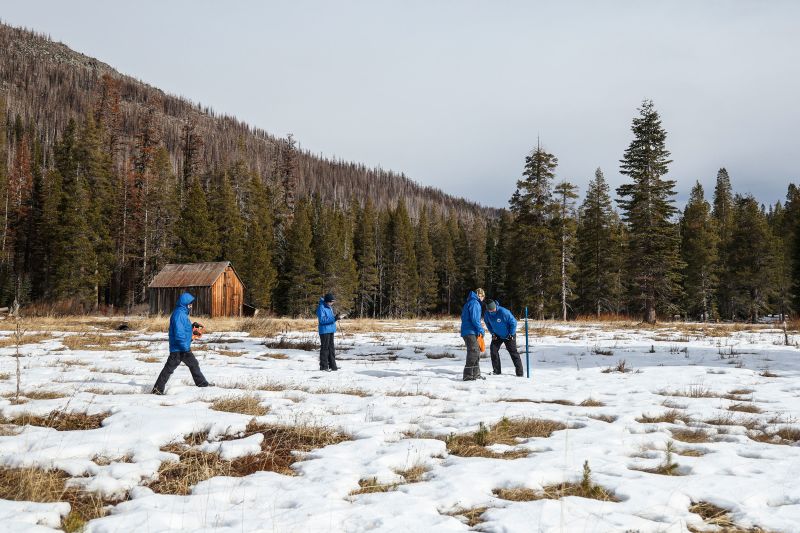Even as winter arrived in the East this week, with treacherous snow and an impending Arctic cold snap, much of the West and its major river basins are still entrenched in warm and dry conditions. It’s a sluggish and concerning start to what should be the region’s wet season and is raising concerns about the future of the water supplies that depend on it.
Although meteorologists and Western water experts caution it’s still early in the winter and a lot can change between now and April, the warm, dry weather is notable for how far-reaching it has been.
This year’s weather and precipitation pattern so far stands in stark contrast to last winter – a blockbuster year for snow that filled reservoirs across the West. If 2023 was a “gamechanger” for the West’s water supplies, 2024 could be shaping up to be an anxiety-inducing pivot back to drought.
Several atmospheric rivers last winter dumped snow across the West by the start of January. But that stormy pattern hasn’t shown up yet this year, said Paul Miller, a hydrologist with the National Oceanic and Atmospheric Administration’s Colorado Basin River Forecast Center.
Snowpack conditions as of early January were 40% to 70% below normal in the upper Colorado River basin, officials with the National Oceanic and Atmospheric Administration said Monday, and there’s “little to no snow” in the lower basin.
But they also noted January temperatures are dipping, and more precipitation is starting to fall in the region, and a midweek storm slammed the Northwest and Northern California with heavy snow and rain. Still, NOAA experts noted Wednesday that these storms were “unlikely to completely erase existing deficits.”
There was some hope this year that El Nino – a Pacific Ocean phenomenon that influences weather around the world – would bring more storms to the West. But NOAA scientists cautioned on Monday that its impact is not as far-reaching; it could bring wetter conditions to the Southwest but drier-than-normal weather to southern Wyoming and northern Colorado. And Northern California is unlikely to be impacted by a typical El Nino, NOAA scientists said.
The region is no stranger to variability of a record wet winter followed by several drier ones, Miller said. But human-caused climate change is making drought longer and more persistent, making each wet year more important, he added.
“It’s very difficult to pinpoint single years or events to climate change,” Miller said. “But this current pattern we’re in over the last 20 to 30 years is very symptomatic of climate change impacts.”
Largest reservoirs are far below normal
In California, the first survey of the year revealed a miniscule snowpack, with about 7.5 inches of snow equivalent to about 3 inches of melted water.
It’s a “pretty modest” showing, said Karla Nemeth, director of the California Department of Water Resources, especially considering last year at this time California was measuring 55.5 inches of snow.
The good news for California, however, is its reservoirs are full for the first time in years – meaning there is ample water to help get through the year.
“Our reservoirs are in much better condition because last year was so incredibly wet,” Nemeth said.
If the state does get a big storm, she said, some dams are already so full they may activate their flood spillways much earlier in the year than is typical. The state would also try to direct extra water that can’t fit in the reservoir into groundwater recharge ponds – attempting to raise depleted groundwater levels, Nemeth said.
“It’s good news for water supply that our reservoir conditions are orders of magnitude much healthier than they were a year ago,” Nemeth said.
Even though California’s dams are full, the nation’s largest reservoirs still have a long way to go. Water levels in lakes Mead and Powell – fed by the Colorado River – are far below average.
“Even though conditions definitely improved there, they’re such massive reservoirs that they’re at critically low levels,” Miller said.
While last winter bolstered water supplies across the West after several perilously dry years, several experts said it’s unlikely a historic water year of that magnitude will happen twice in a row.
“You tend to get wet years followed by several dry years,” Hasencamp said. “We shouldn’t expect every year to be dry, but we should expect more dry years than wet years.”







































